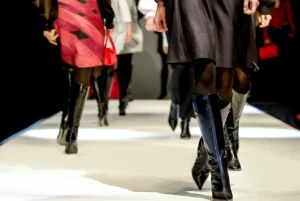
Introduction
Fashion Week is more than just a glamorous get-together of the world’s fashion elite. It’s the epicenter of sartorial creativity, where designers present their latest creations and set the tone for the trends that define the seasons ahead. Let’s explore the fascinating impact of Fashion Week on the trends that define our wardrobes.
The Runway as a Cultural Canvas
Fashion weeks are more than just clothing shows; they are a cultural space where designers tell stories that reflect the culture of our era. The runway is a stage for narrative, where each show reflects the designer’s interpretation of current social trends, cultural influences, and political and environmental issues.
Trendsetting at Its Pinnacle
Fashion weeks are where trends come from, where designers push the boundaries of fashion. These events are trend-setting centers, where the avant garde, the nonconformist and the experimental collide. The combination of diverse design approaches comes together in a trend prediction that shapes the future of the fashion industry.
Setting Color Palettes Ablaze
Color palettes are one of the most important and influential aspects of Fashion Weeks. Designers carefully select colors that reflect a particular mood or theme. These colors are then widely used in the following collections. Color palettes bring life and inspiration to the fashion world.
Silhouettes and Shapes: Sculpting the Future of Fashion
The shapes and silhouettes we see on the runway shape our perception of clothing. From the oversized blazer to the asymmetrical hemline, the runway is like a sculptor’s studio, shaping the shapes that will define the next season’s trends. Experimenting with cut, length, and form creates a ripple effect across fashion markets.
Materials and Textures: Touching Innovation
Fashion Weeks are a laboratory for material experimentation. Fashion Week designers introduce new fabrics, textures and embellishments to create a new way of wearing clothes. The runway becomes the laboratory for textile innovation, creating a new wave of experimentation across the fashion industry.
Influence on High Street and Fast Fashion
The impact of Fashion Weeks goes beyond the haute couture world, and extends to the high street and the fast fashion world. What appears on the catwalk one season can be on the shelves the following. High street brands take note of Fashion Week trends and translate them into ready to wear collections for the masses.
Street Style Evolution
Not only do Fashion Weeks shape the trends on the runway, but they also have a huge impact on street style. The influencers, fashion enthusiasts, bloggers and influencers who attend Fashion Weeks are living canvases. They show how runway trends can be seamlessly incorporated into your everyday wardrobe. Street style becomes an extension of the influence of the runway, and the cycle continues.
Global Homogenization of Style
Fashion Weeks help to create a global uniformity of style by breaking down geographical boundaries and promoting a common sense of style. Trends announced in Paris resonate in Tokyo, while trends embraced in New York resonate in Milan. This global interconnectedness creates a global fashion identity where trends transcend borders.
The Ripple Effect: From Fashion Weeks to Fashion Months
As the impact of Fashion Weeks increases, the ripple effect evolves into what we now know as Fashion Months. As more and more fashion weeks pop up across major metropolitan areas, the cumulative effect on trends becomes even more pronounced. Fashion Months dictate the rhythm of the entire industry, providing a dizzying array of design inspiration.







